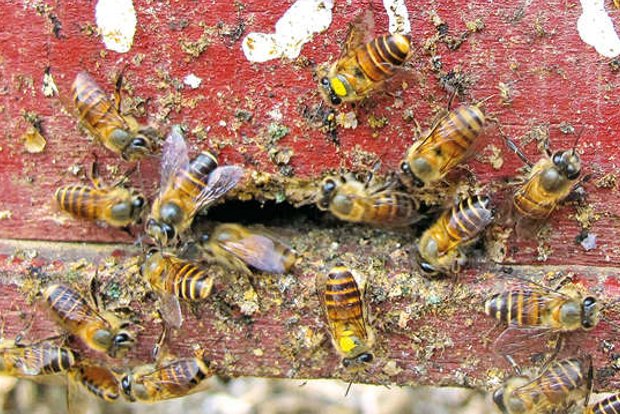Bees do not scream with their mouths, but with their bodies. When giant hornets draw near and threaten their colony, Asian honeybees cock their abdomens into the air and run while vibrating their wings. The noise can sound eerily like a human scream.
Researchers describe the Asian honeybee’s unique acoustic signal, which is called an anti-predator pipe. The researchers colloquially refer to it as a “bee scream.” “It’s like a shriek,” said Hongmei Li-Byarlay, an entomologist at Central State University in Ohio, who was not involved with the new research. Dr. Li-Byarlay added that her colleagues who have observed the sounds before compared the noise to “crying.”
The bees make this sound as their nests are threatened by the Vespa soror hornet, which hunts in packs and can dispatch a beehive in a matter of hours. Heather Mattila, a behavioral ecologist at Wellesley College in Massachusetts and an author on the study, first heard the bee scream in Vietnam in 2013.
She was studying how Asian honeybees smear animal dung around their nests to ward off V. soror and Vespa mandarinia, more famously known as the murder hornet. The behavior showed the bees’ highly evolved social organization, said Lien Thi Phuong Nguyen, a wasp researcher at the Vietnam Academy of Science and Technology in Hanoi and an author on the new paper.
Dr. Mattila noticed the hives exploded in sound when V. soror hornets drew near. When she stuck a recorder at the entrance of a hive fringed by hornets, she heard a cacophony of noise.
While she recognized some sounds bees are known to make — hisses, beeps, and pipes — Dr. Mattila, who has studied European honeybees for 24 years, had never heard anything as loud and frenzied as this.
The researchers placed recorders inside hives and video cameras outside the entrances to record the honeybee soundscapes. The whirring, helicopter sounds of the hornets often drowned out the bees, so they also recorded hives reacting to paper glazed with hornet pheromones.
Dr. Mattila brought the recordings back to the United States, where Hannah Kernen, now a research technician at the University of Louisiana at Lafayette, helped analyze the recordings. As Ms. Kernen and Dr. Mattila pored over nearly 30 hours of bee noise, which contained about 25,000 instances of acoustic signaling, they felt confident they were listening to a new sound — a piercing alarm signal that shared traits with animal shrieks, including unpredictable frequencies and loud volumes.
For months, the researchers compared the video recordings inside the hive to the ones outside the entrance to see if they could isolate a moment where the new sound could be first heard in both videos and pinned down to a single bee.
Dr. Mattila listened to these recordings for hours into the night. “I would get chills and start to worry about them, even though the recordings are from years ago and the bees are long dead,” she said. “There is something very human and recognizable in the sounds.” The study shows “how much more complex the organization of collective defense behavior is” in Asian honeybees than previously thought, said Ebi Antony George, a post-doctoral researcher at the University of Lausanne in Switzerland who was not involved with the research. Far less is known about Asian honeybees than European honeybees, he added. Asian honeybees are mostly studied in the wild, often nesting in hard-to-reach spots and will flee the hive if stressed.























